 "Grim and Gristle"
"Grim and Gristle"Beth Tacular
The enchanted world of a four year old, learning and absorbing the colorful array of art, nature, people, and places, every moment is a new experience and everything seems new and ancient all at the same time. The eyes of a four year old are light-hearted, but every bit as understanding and compassionate as those of a 40 year old. The ability to utilize those moments and experiences to create another world or to transport your creative abilities into another time while filtering in you experiences as an adult is an incredible gift, but one of many possessed by North Carolina native Beth Tacular.
The enchanted world of a four year old, learning and absorbing the colorful array of art, nature, people, and places, every moment is a new experience and everything seems new and ancient all at the same time. The eyes of a four year old are light-hearted, but every bit as understanding and compassionate as those of a 40 year old. The ability to utilize those moments and experiences to create another world or to transport your creative abilities into another time while filtering in you experiences as an adult is an incredible gift, but one of many possessed by North Carolina native Beth Tacular.
I say one of many because Beth makes all sort of things, from web pages and graphic design with The Internest Collective to owl-related products with Owlfits to beautiful music with Phil Moore as Bowerbirds. She many outlets for her artistic abilities and some of her work is currently been shown at Wootini Gallery in a show called "Backwoods Golden Gigantic" through June 10 in Chapel Hill, NC.
With all of this going on Beth was still able to answer a few of our questions on her art and the art world in general.
Orange Alert (OA): How would you define your styling of painting?
Beth Tacular (BT): I would describe my style as the magical-realistic visions of a prophetic four year old shaman living 4,000 years ago, in what is now northern Portugal.
When I'm painting, I think most of the time I'm trying to create something that feels like some sort of mixture between ancient human culture and things I loved as a small child. I think that's why everything ends up a little cuter than I imagined it would be initially. Like when I'm trying to make something very noble and serious, it ends up having little red and white polka-dot mushrooms in it, or those kinds of mountains that always have snow on the top. Thematically, I think a lot about how human civilizations are destroying so much life on Earth, and I'm pretty taken with the beauty of that life that's being wiped out, so I create pictures of animals re-taking the Earth, or humans unintentionally harming plants and animals. I'm also obsessed with learning about the evolutionary origins of humans, so my style lately is getting a little more archetypal and ancient-influenced. Visually, I like to play with depth versus flatness, patterns and symmetry.
 "Rise! Flying Bird People"
"Rise! Flying Bird People"OA: Who are some of your biggest influences artistically?
BT: In terms of visual inspiration, I think I draw from a lot of different sources. I'm really into ancient human cultures, and also contemporary ones in which people are still living in harmony with the environment around them, so I like to look at the art they produce to get ideas for what art means to them, and what sorts of symbols they use. I also like to look at art magazines, like the now defunct magazine called "The Drama," which featured a lot of really amazing artists, like my friends Allyson Mellberg and Jeremy Taylor, as well as Saelee Oh and Souther Salazar. I found this magazine at one point, and I felt like I had found a lot of artists who seemed like the types of people I'd like to be friends with - people who seem to see the world a lot like I do. I also love looking at children's books, which I read obsessively as a child. I don't spend much time reading them now, actually, but I try to reproduce the same kind of imagery, or recreate the same feeling that I had as a child looking at the pictures in children's books, in my art now.
I'm also very inspired and influenced by the ideas and styles of non-visual artists: writers like Virginia Woolf, Gary Snyder, Derrick Jensen; the movies of Michel Gondry and that old stop-motion animated movie about Rudolf the Red-nosed Reindeer; and music by artists like Bjork and Joanna Newsom. All these people have an amazing ability to draw you into a really magical world that they have created, with a high level of detail describing that world, and a lot of beautiful imagery. They also keep in their personalities and artwork a lot of the power that children have to see the world as it is, and to appreciate really wonderful things. I want to make art like they do.
BT: In terms of visual inspiration, I think I draw from a lot of different sources. I'm really into ancient human cultures, and also contemporary ones in which people are still living in harmony with the environment around them, so I like to look at the art they produce to get ideas for what art means to them, and what sorts of symbols they use. I also like to look at art magazines, like the now defunct magazine called "The Drama," which featured a lot of really amazing artists, like my friends Allyson Mellberg and Jeremy Taylor, as well as Saelee Oh and Souther Salazar. I found this magazine at one point, and I felt like I had found a lot of artists who seemed like the types of people I'd like to be friends with - people who seem to see the world a lot like I do. I also love looking at children's books, which I read obsessively as a child. I don't spend much time reading them now, actually, but I try to reproduce the same kind of imagery, or recreate the same feeling that I had as a child looking at the pictures in children's books, in my art now.
I'm also very inspired and influenced by the ideas and styles of non-visual artists: writers like Virginia Woolf, Gary Snyder, Derrick Jensen; the movies of Michel Gondry and that old stop-motion animated movie about Rudolf the Red-nosed Reindeer; and music by artists like Bjork and Joanna Newsom. All these people have an amazing ability to draw you into a really magical world that they have created, with a high level of detail describing that world, and a lot of beautiful imagery. They also keep in their personalities and artwork a lot of the power that children have to see the world as it is, and to appreciate really wonderful things. I want to make art like they do.
But I think probably my biggest influence these days, and maybe always, artistically, is my mother, who is an artist and art teacher. When I was little, we spent a ridiculous amount of time making art and crafts together. We didn't have very much money, so we made everything, canned our own vegetables, made our own Halloween costumes, made all our own Christmas tree ornaments and gifts for friends, a lot of our own clothes, tablecloths, and things like that. I was in awe as a child of my mom's really good senses of color, texture and pattern. She can also draw and paint realistically, and she is the first one who taught me to draw.
In the Spring, we used to paint eggs with acrylic paints, and she used to make these amazing patterns. I think she was influenced artistically by going to art school in the early seventies, and she grew up with a Puerto Rican mother, who was from a family of artists. My grandmother's house had a lot of amazing art and other crazy stuff all over the place - lots of color and light, and there was a mixture of Spanish and native Puerto Rican art, along with kitschy things from the 50s, like those little ceramic big-eyed kids sitting on a toilet with some sort of not very funny joke written on it. Or a lot of those snow globes, and African masks on the wall, and collector's plates. Thinking about all this, I think I was actually very influenced by my grandmother's house, as well as my other grandmother's house, which was decorated very modern, with a lot of Japanese art and furniture mixed in. They were these polar opposites in terms of decorating style and personality, and I think, as the two matriarchs in my life, they worked their way into my own personality as these two opposing forces of simplicity and space versus overboard eccentricity and craziness.
OA: What is the story behind your reoccurring "Mungry" character?
BT: The first time I drew Mungry, I had this idea that I didn't really think out, but it more came to me as an image, of this hairy, primal human character, who would represent humanity as a whole right now, and who could act out the different ways we are interacting with the rest of Nature. She is usually very hungry (thus the name Mungry - short for "I'm hungry."), probably spiritually and physically hungry, and she goes around eating whatever she can find, usually birds' nests and trees. Nests and trees are some of the things I find most beautiful, and they are homes to birds and other animals, and we are wiping them out like crazy with our new construction, highways, and boring, terrible things like Wal-marts, malls, factory farms, and prisons.
BT: The first time I drew Mungry, I had this idea that I didn't really think out, but it more came to me as an image, of this hairy, primal human character, who would represent humanity as a whole right now, and who could act out the different ways we are interacting with the rest of Nature. She is usually very hungry (thus the name Mungry - short for "I'm hungry."), probably spiritually and physically hungry, and she goes around eating whatever she can find, usually birds' nests and trees. Nests and trees are some of the things I find most beautiful, and they are homes to birds and other animals, and we are wiping them out like crazy with our new construction, highways, and boring, terrible things like Wal-marts, malls, factory farms, and prisons.
Even though I am really, really deeply angry and frustrated with our civilized human culture and it's inherent destructiveness, I still look at the people who comprise the culture and I think they are very beautiful, and they (including myself) don't mean to be ruining everything the way we are. We just want to find love in our lives, and love other people, and love our lives, and connect with others, but we are so confused by being brought up in what's really an abusive environment. We think, "Oh, I need a house where I can feel safe from the world, where my children can play in a backyard," and we build a house that's way too big, far apart from our neighbors, and then we use pesticides and fertilizers to make our lawns and flower gardens perfect looking, and we buy products that are tested on animals, and we keep participating in a society and paying taxes that fund wars for oil and criminal justice systems that are totally unjust.

"Mungry finds Hidden Treasure"
I think a lot of people these days feel confused and hopeless, or angry, or in denial, but we still have a lot of moments of happiness, and there's still a lot of beauty. So Mungry is all of us. I have also painted some Mungry-like people, including recently Mungry's boyfriend. I spent a long time working on what their faces would look like, because I wanted them to be lovable, but also kind of ugly and cute at the same time.
OA: Do you listen to music while you create? Who are some of your favorite artists to listen to while creating and in general?
BT: I like to listen to people like Mamadou Diabate, Joanna Newsom, Bjork, Ticonderoga, Cat Power, and the Postal Service while I'm making art. I actually haven't been able to control what music I listen to while making art, for about a year, because I travelled for seven months around the country last year, and now I live in an Airstream trailer in the woods, with no electricity. So during my travels, I made art outside or in coffee shops, and now I sit at a little table in the Airstream, or in a tent outside, and I just listen to the sounds of birds, small mammals and insects around me.
BT: I like to listen to people like Mamadou Diabate, Joanna Newsom, Bjork, Ticonderoga, Cat Power, and the Postal Service while I'm making art. I actually haven't been able to control what music I listen to while making art, for about a year, because I travelled for seven months around the country last year, and now I live in an Airstream trailer in the woods, with no electricity. So during my travels, I made art outside or in coffee shops, and now I sit at a little table in the Airstream, or in a tent outside, and I just listen to the sounds of birds, small mammals and insects around me.
I also like to sing while I paint, and I like to sing songs of artists whose songs I know the words to, or practice singing the songs I sing in the band I play in, Bowerbirds, or make up little songs about the painting I'm making, or about my ancestors. But that can get distracting. It's best to sing while filling in big areas with texture.
OA: In the last few years there has been a huge increase in the acceptance of illustrators into the art community and galleries. Where do you think the illustrator fits into the art scene, and why has the popularity grown?
BT: That's a good question. I'm still not sure how I feel about the art scene and the world of art collecting and galleries. I like the idea of all of it - illustration, art, being fluid. I think that art *is* illustration, but the ideas behind the art - what you are illustrating - are your own ideas, instead of the ideas of a client. I think my art is sort of illustrative-looking, and I got a hard time from a professor once for that, because he thought it wasn't "fine art," but I don't see why there has to be an imaginary line drawn between illustration and art. I'm glad illustrators are making art that they show in galleries, and that gallery artists make album covers.
BT: That's a good question. I'm still not sure how I feel about the art scene and the world of art collecting and galleries. I like the idea of all of it - illustration, art, being fluid. I think that art *is* illustration, but the ideas behind the art - what you are illustrating - are your own ideas, instead of the ideas of a client. I think my art is sort of illustrative-looking, and I got a hard time from a professor once for that, because he thought it wasn't "fine art," but I don't see why there has to be an imaginary line drawn between illustration and art. I'm glad illustrators are making art that they show in galleries, and that gallery artists make album covers.
I think what's happening with art is sort of like punk rock music or early hip hop, and how those musicians were uninterested with working within the regular music world, where there was a lot of money and corporate politics involved. I think people are looking for ways to make art more accessible, meaning more affordable, for people with less money, like me or my friends, who are mostly other artists. People are doing print-making and make other affordable things, like crafts, tee shirts and posters, and galleries are popping up that have "merch" sections for the artists whose work they show. A lot of this stuff is really cool art, and I think people are doing this because they are politically not into the status quo of the U.S. government, for example, or aspects of the system that excludes art and ideas that are seen as too radical.
I think a lot of illustrators are people who were influenced by show posters growing up, or comics, or other uncommercial sources. I think people who have progressive or radical politics, and whose main artistic talent is visual art, are finding that there isn't really a place for them to exist in this culture and make a living. Musicians have indie music, filmmakers have independent film venues, but people can come to a music show or go see a movie for $8, but you can't buy much art for that much, at least not in most galleries. So I guess artists are doing posters and things like that, and people are opening less snooty galleries to show this sort of work - places like Lump Gallery in Raleigh, or Cinders in Brooklyn, or Motel in Portland. But I think the merging of the art and illustration worlds is still in flux, and it will be interesting to see what happens.
OA: What's next for Beth Tacular?
BT: Well, I just had a couple shows in galleries, and Bowerbirds just released a full length album and did a mini-tour. I have a lot more time on my hands all of a sudden, and it feels like I have a lot of freedom to decide what to do next. One thing I'm doing is reconstructing a little, old tobacco barn on the land near my Airstream, to live in. I haven't been really able to make any three dimensional art out in the Airstream, because of lack of space, so we (my partner, Phil, and I) are building a little log cabin with a loft to live in, over the summer. The Airstream will be our new practice space, maybe, or something like that. We will also probably tour some with the band. I want to visit independent galleries and shops around North America and maybe Europe, if we tour there, to see what people are making in other places.
BT: Well, I just had a couple shows in galleries, and Bowerbirds just released a full length album and did a mini-tour. I have a lot more time on my hands all of a sudden, and it feels like I have a lot of freedom to decide what to do next. One thing I'm doing is reconstructing a little, old tobacco barn on the land near my Airstream, to live in. I haven't been really able to make any three dimensional art out in the Airstream, because of lack of space, so we (my partner, Phil, and I) are building a little log cabin with a loft to live in, over the summer. The Airstream will be our new practice space, maybe, or something like that. We will also probably tour some with the band. I want to visit independent galleries and shops around North America and maybe Europe, if we tour there, to see what people are making in other places.
Then, this late summer and fall, I really want to get a solar panel so I can use my sewing machine and start making more sculpture with fabric, and then I want to start experimenting a little with my paintings and drawings. I have some ideas. I also bought a lot of vintage yarn, and I want to do something with that. I also want to start making prints. We'll see how soon I can actually make any of this happen.
 "Tree with Ancestors"
"Tree with Ancestors"
Bonus Questions:
OA: Coffee? If yes, what is your favorite type of coffee and where is your favorite coffee spot?
BT: I hardly ever drink real coffee anymore, because I'm really sensitive to caffeine, and it makes me crazy, but sometimes I do. I like tea a lot. I like to drink coffee outside. If I'm going to drink coffee, I'll have an iced Americano. There's a little cafe called Caffe Driade in Chapel Hill that has a magical back patio, which I like to visit. I'm typing this from the Open Eye cafe in Chapel Hill, which I also like. And I like Cup a Joe in Raleigh.
OA: What is your favorite gallery that you have been shown in and in general?
My favorite gallery is Lump gallery in Raleigh, NC. I never showed there, but I was a part of team lump, the artists' collective associated with the gallery, for a while, so I showed with them in different places around the country.
I guess my favorite gallery I have shown in is Giant Robot San Francisco.
OA: I enjoyed your piece that appeared in the booklet for "Hymns for a Dark Horse", how else does this aspect of your life carry over into your music career?
BT: Thank you! I have also made posters for our shows, the album art for our other album, "Danger at Sea", and the backgrounds for the Bowerbirds.org and Burlytime.com (our record label) web sites. I think also that Phil, who started Bowerbirds, believed I would be able to contribute musically to his band, because he had seen my art, and he felt we shared a similar aesthetic and creative personality.

Also, when I describe how I think something needs to sound, I tend to use visual (or maybe they are tactile) words, like "more prickly," "less pointy," or "silkier." And, I'm the one in the band who does the most reading and thinking about political and environmental issues, so the ideas that inform my art also end up influencing the content of Bowerbirds songs.
But it goes both ways. Once we started singing about birds and the ocean a lot, I started painting more and more birds and oceans. And getting into expressing myself musically has really made me feel more free with my visual art self. It just feels more natural to do more than one thing.
For more information on Beth Tacular please visit her website or her myspace page.
+by+Nick+Volkert).jpg)
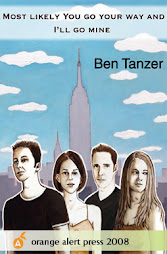

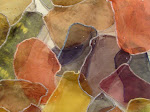









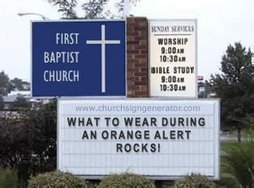


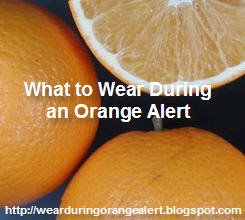


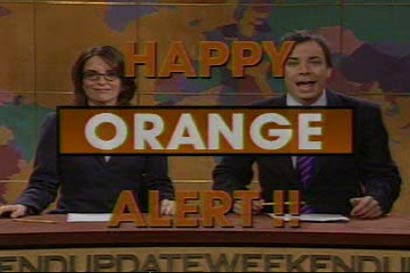


1 comment:
Now that I've read this it makes sense how Beth Tacular sounds a whole lot like Spectacular. She seems to be such an interesting individual. Great interview, by the way (:
Post a Comment